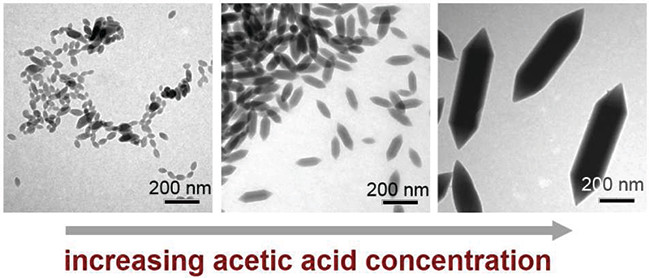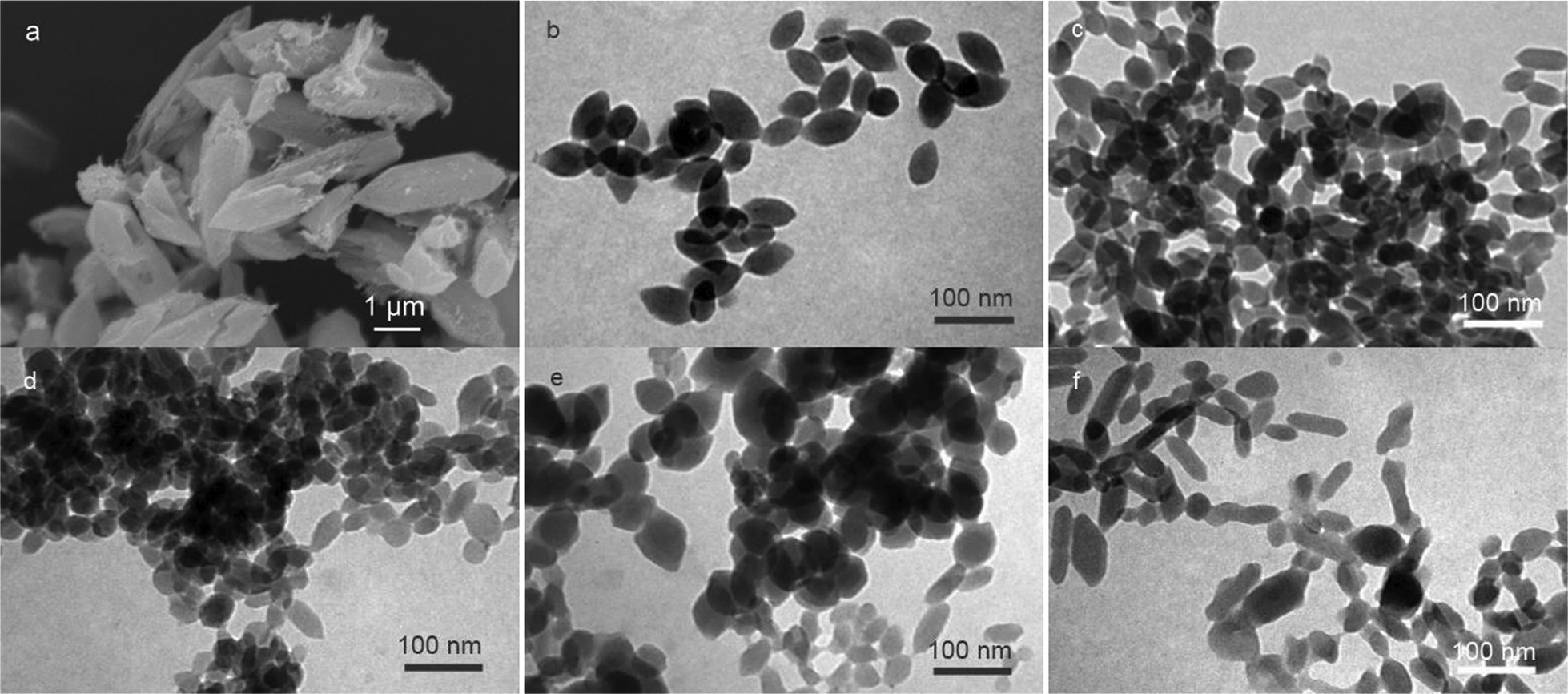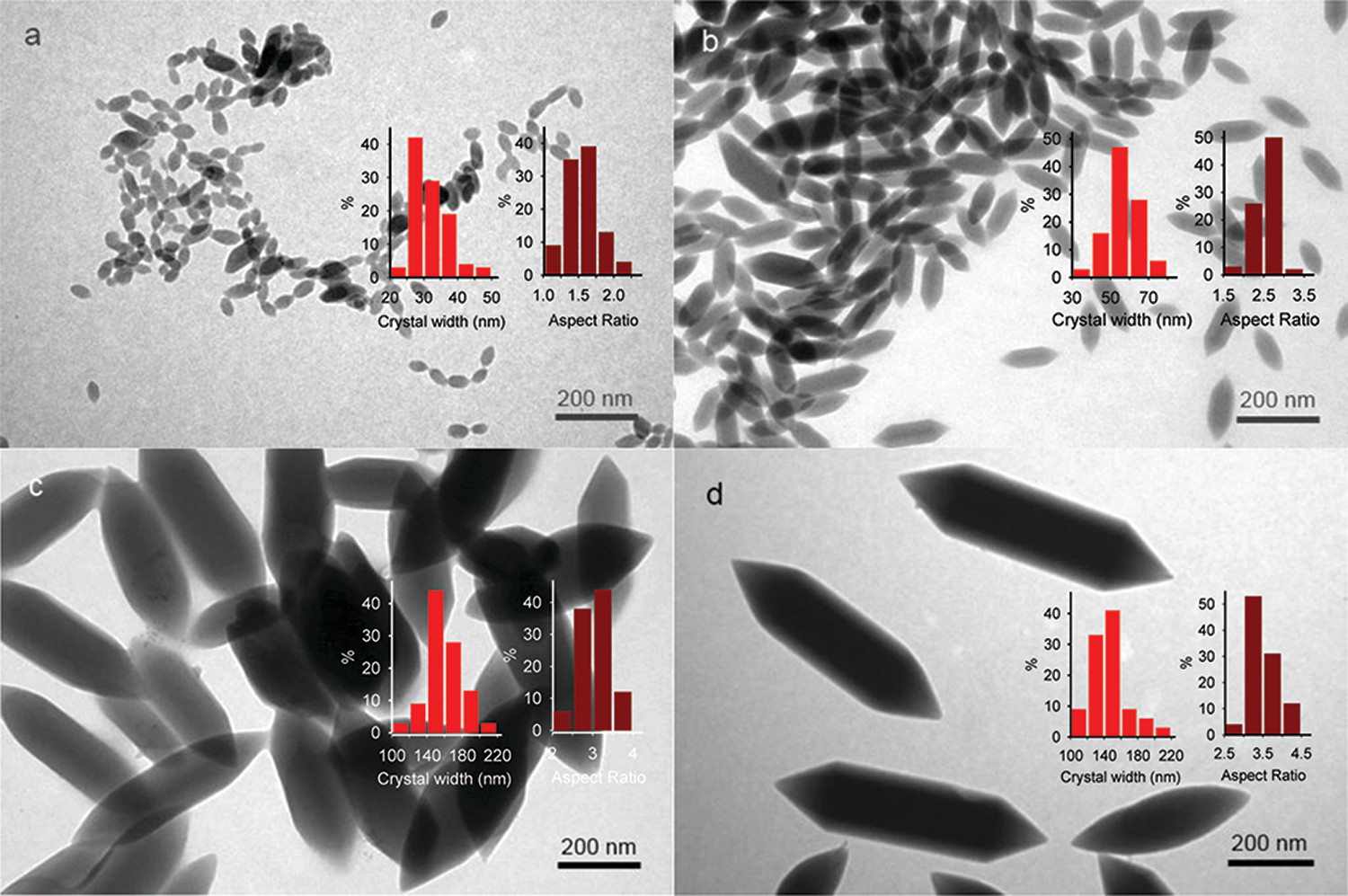Home >
News > Novel Route to Size-Controlled FeMIL-88B NH₂ Metal-Organic Framework Nanocrystals
Novel Route to Size-Controlled FeMIL-88B NH₂ Metal-Organic Framework Nanocrystals
Summary:
The authors from Laval University and Institute of Chemistry, Vietnamese Academy of Science and Technology developed Fe-MIL-88B-NH₂ nanocrystals with controlled sizes and aspect ratios, achieving precise size tuning (50–500 nm in length) in the field of metal-organic framework (MOF) nanomaterial synthesis.

Background:
1. To address the problem of uncontrollable size and shape in nanoscale MOF synthesis, previous researchers developed methods such as microemulsions, microwave-assisted synthesis, and coordination modulation. However, these methods suffered from issues like aggregation, amorphous products, or inability to precisely tune dimensions.
2. The authors proposed an innovative method using Pluronic F127 (triblock copolymer) and acetic acid simultaneously, realizing size-controlled synthesis of Fe-MIL-88B-NH₂ nanocrystals with high crystallinity, overcoming the limitations of existing methods.
Research Content:
1. Synthesis:
The authors synthesized Fe-MIL-88B-NH₂ nanocrystals via a hydrothermal method: Fe³+ salts (FeCl₃·6H₂O or Fe(NO₃)₃·9H₂O) and 2-aminoterephthalic acid (H₂N-BDC) were used as precursors, with Pluronic F127 (stabilizer) and acetic acid (modulator). The mixture (molar ratio Fe³+/H₂N-BDC/H₂O/F127/acetic acid = 1:0.5:1255:x:y) reacted at 110°C for 24 h. Size was controlled by adjusting y (acetic acid/Fe³+ molar ratio, 0–16).
2. Characterizations:
1) BET and pore size distribution: Not explicitly provided, but the material is confirmed to have porous structure consistent with MIL-88B framework.
2) SEM/TEM tests show the particle size of the material: Nanocrystals are bipyramidal hexagonal prisms. With y increasing from 0 to 16, length increases from 50±5 nm to 500±10 nm, width from 30±5 nm to 150±10 nm, and aspect ratio (length/width) from 1.5 to 3.5.
3) Other tests: XRD confirms hexagonal P6₃/mmc symmetry (unit cell a≈9.7 Å, c≈19.0 Å); FTIR identifies amino groups (3490 cm⁻¹, 3370 cm⁻¹) and Fe-O bonds (537 cm⁻¹); ζ-potential and TGA verify F127 and acetic acid are removable by ethanol washing.
3. Application:
The material has potential applications in catalysis, chemical sensing, and drug delivery, benefiting from tunable nanoscale size, exposed active sites, and accessible amino groups.
4. Mechanism:
- F127 stabilizes early-stage MOF nuclei via weak coordination between its alkylene oxide segments and Fe³+, inhibiting aggregation.
- Acetic acid controls deprotonation of H₂N-BDC: Higher acetic acid concentration reduces deprotonation degree, slowing nucleation and growth, leading to larger nanocrystals with higher aspect ratios (preferential growth along [001] direction).


Outlook:
This research provides a versatile strategy for size-controlled synthesis of carboxylate-based MOF nanocrystals. The method is expected to extend to other MOFs (e.g., MIL-53, MIL-100), facilitating the development of MOF-based nanodevices in catalysis, sensing, and biomedicine.
Novel Route to Size-Controlled FeMIL-88B NH₂ Metal-Organic Framework Nanocrystals
Authors: Minh-Hao Pham, Gia-Thanh Vuong, Anh-Tuan Vu, Trong-On Do
DOI: 10.1021/la203570h
Link: https://pubs.acs.org/doi/10.1021/la203570h
The above review is for academic progress sharing. For any errors or copyright issues, please contact us for correction or removal.


